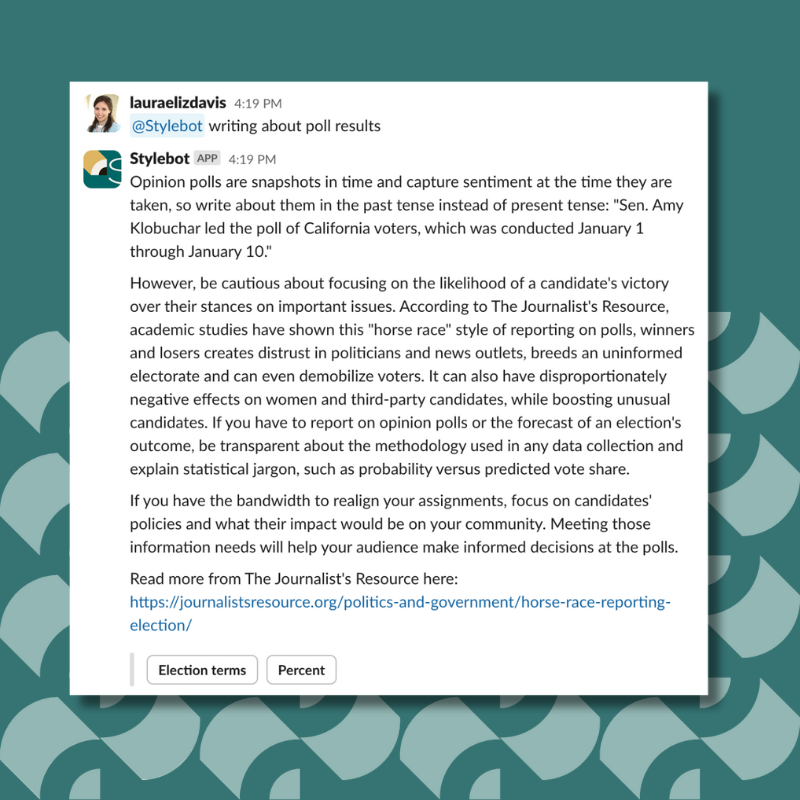Election Day is less than three months away, and we probably don’t need to tell you that we’re already in an unprecedented campaign season.
This, along with the already low trust the public has in the news media, means that the pressure is on journalists this year to frame their election stories in ways that are thoughtful, helpful, informative and trustworthy.
It’s hard to change newsroom habits, but there are research-backed strategies on everything from combating misinformation to writing about opinion polls that can help journalists make more informed choices in their election coverage. That’s why we’re partnering with Modifier and Trusting News to expand the USC Annenberg Style Guide that powers Stylebot to include easy-to-adopt best practices for election coverage.
So we’re doing something a little different in the newsletter this week and giving you a sneak peek of research-backed election advice for newsrooms.
We’ll start with an easy one: polls. Opinion polls are a staple of election coverage, but reporting on them is not without consequence. Here’s our advice on how to do so responsibly:

This election-related advice is now accessible to anyone who subscribes to Stylebot. But we don’t want to share it only with organizations that can afford it. That’s why we’ve partnered with the Knight Foundation, which will pay for small and nonprofit newsrooms to access Stylebot through the election. Learn more at the Knight Election Hub or simply get in touch by replying to this email.
And this isn’t the last election-themed newsletter you’ll get: Next week we’ll share some timely tips ahead of this month’s Democratic National Convention, and leading up to the election we’ll share advice on writing about key topics, such as abortion, immigration and LGBTQ+ issues.
💌 A tip a week
This post is adapted from Stylebot’s weekly writing tips newsletter. Subscribe here to get a writing tip in your inbox every Friday.
💬 Get reliable, ethical writing advice at your fingertips
Improving your writing means making better choices every day. Stylebot makes it easy with our Slack, Teams and Google Chrome extensions. Try Stylebot for free today.
📝 About Stylebot
Stylebot helps media professionals save time without sacrificing quality by answering editing questions on Slack, Microsoft Teams and Google Chrome. We’re on a mission to make editing faster, easier and more fun ✨ Learn more about Stylebot or follow us Instagram, X or LinkedIn.
